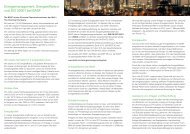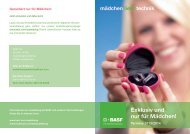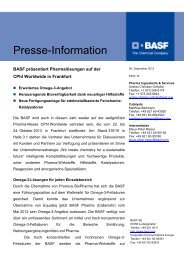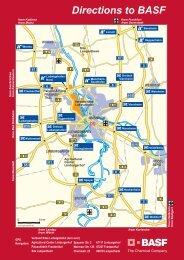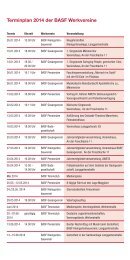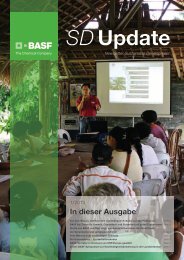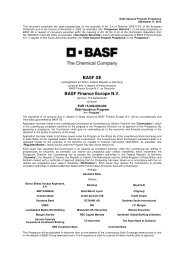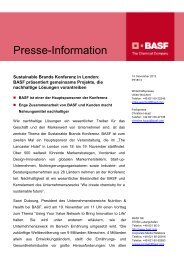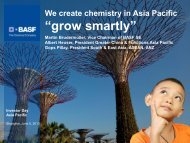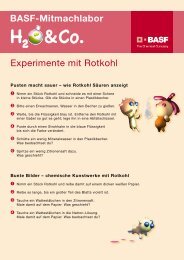Inosolv 400 Fotopur - BASF.com
Inosolv 400 Fotopur - BASF.com
Inosolv 400 Fotopur - BASF.com
You also want an ePaper? Increase the reach of your titles
YUMPU automatically turns print PDFs into web optimized ePapers that Google loves.
Objectives and Use of the Eco-Efficiency<br />
Study<br />
Validated<br />
Eco-Efficiency<br />
Analysis method<br />
� The study was made to <strong>com</strong>pare different alternatives for cleaning wafers with post plasma<br />
etch residues with different chemicals for the electronic industry. The alternative in focus is<br />
<strong>Inosolv</strong> <strong>400</strong> <strong>Fotopur</strong> as a new cleaning agent for this application It is not only the price and<br />
environmental impact of the alternative materials, which are important to the <strong>com</strong>parison. A<br />
life-cycle view should identify the strengths and weaknesses of the different alternatives.<br />
� The study used the methodology of the eco-efficiency analysis, developed by <strong>BASF</strong> as a<br />
life-cycle tool to show and assess different parts of the life-cycle of the chemical reactions<br />
and related materials which are required to achieve the desired product. It is one method<br />
between others that are able to assess environmental data over the whole life cycle.<br />
� The ecological calculations of the single results in each category are following the ISO-rules<br />
14040 ff in the main points. The quantitative weighting step to get the ecological fingerprint<br />
and the portfolio are not covered with the ISO-rules. The eco-efficiency analysis has more<br />
features than are mentioned in the ISO rules.<br />
� The methodology has been approved by the German TUV. This methodology was used by<br />
the "Öko-Institut - Institute for applied ecology" in Freiburg Germany in different APMEstudies.<br />
Öko-Institut uses a quite similar methodology with a different weighting system<br />
("Ecograde"). . TNO in the Netherlands using the <strong>BASF</strong> standard method with a different<br />
weighting system. The Wuppertal Institute accepts the method: “Basically, the large number<br />
of indicators used in the eco-efficiency analysis of <strong>BASF</strong> make relatively reliable statements<br />
possible …“. The method was initially developed by <strong>BASF</strong> and Roland Berger Consulting,<br />
Munich.<br />
Dr. P. Saling, GUP/CE, Electronic Chemicals, Systems-CR, 31/03/2006<br />
6




